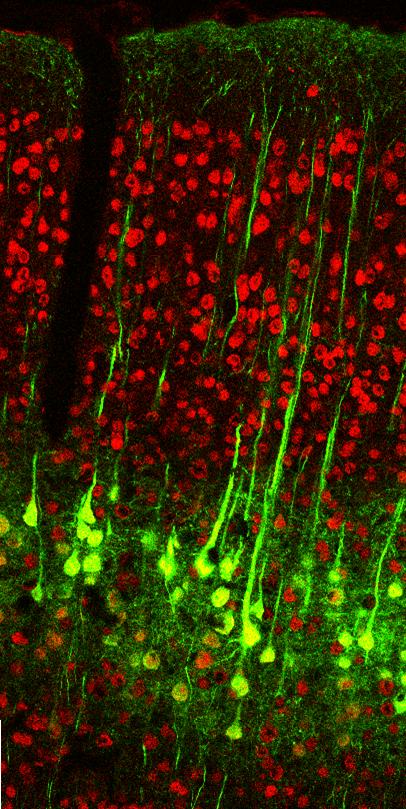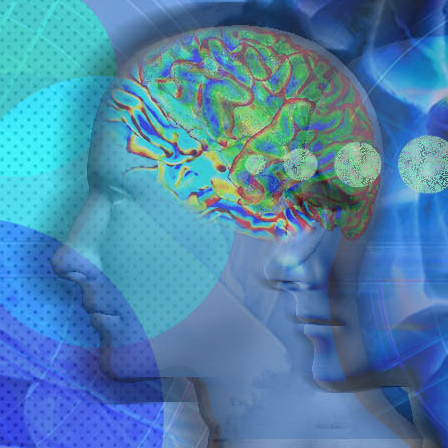Columbia neuroscientists have revealed that a simple brain region, known for processing basic sensory information, can also guide complex feats of mental activity. The new study involving mice demonstrated that cells in the somatosensory cortex, the brain area responsible for touch, also play a key role in reward learning, the sophisticated type of learning that allows the brain to associate an action with a pleasurable outcome. It is the basis for how we connect our work in the office to that paycheck, or that A+ to the studying we did in preparation for the test.
The new research, published today in Cell Reports, provides evidence that learning and memory are not relegated to a few select regions, but instead may permeate the brain.
“Our brains are masterful at making connections, or associations, between seemingly disparate pieces of information, but where those associations are stored has remained an unresolved question,” said Randy Bruno, PhD, a principal investigator at Columbia’s Mortimer B. Zuckerman Mind Brain Behavior Institute and the paper’s senior author. “With today’s research, we’ve not only witnessed these associations forming in real time at the level of individual brain cells, but we’ve also shown that this type of learning occurs in a brain region that was not thought to have the capacity to do so.”
Simple associations may be learned faster and better if the primary sensory areas shoulder some of the work at the outset.
Most cells are made up of a cell body, but neurons have a more complicated shape; they have branches jutting outward from their body. These treelike branches, called dendrites, can extend from a single cell by the thousands, linking and sending electrical pulses to dendrites from neighboring neurons.
The organization and layout of dendrites is particularly intriguing in the somatosensory cerebral cortex. Like a many-tiered cake, it contains six distinctive layers. Each layer looks a little different.
“Neurons in the somatosensory cortex are located deep in layers five or six, but their dendrites extend well up into the topmost layer,” said Dr. Bruno, who is also an associate professor of neuroscience at Columbia’s Vagelos College of Physicians and Surgeons. “The result is an intricate network of dendrites filling the somatosensory cortex’s top layer, like the canopy of a dense forest.”
While monitoring activity in those dendrites, the researchers trained mice to perform a simple sensory task. The mice used their whiskers to sense a small pole in a darkened room. Once finding the pole, the animals moved a lever that released water as a reward.
“Because this task involved the animals’ sense of touch, we expected dendrites in the somatosensory cortex to fire when the whiskers touched the pole, which they did,” said Dr. Bruno. “But during the second part of the task, when the animal received the water reward, those same dendrites fired a second time — something we did not expect.”
That observation, which linked sensory dendrites directly to reward learning, was puzzling. Reward learning is the process by which the brain connects a sequence of actions to a feel-good sensation, and is thus more likely to repeat those actions. Decades of research has shown reward learning to be guided by various brain regions but little attention has been paid to the sensory cortex.
Instead, conventional wisdom argued that the sensory cortex merely relays basic information about an outside stimulus, such as whiskers touching a pole. That information is sent to an association cortex, which collects and organizes information for further processing in the frontal cortex, one of the brain’s more sophisticated regions.

Above: apical dendrites extending from neurons (green) into layer 1 of the somatosensory cortex (Credit: Bruno lab/Columbia's Zuckerman Institute).
“Our findings suggest that the brain begins learning complex associations earlier than previously thought,” said Dr. Bruno.
Indeed, when the researchers then removed the pole, animals that had been trained in the task had another surprise in store. The animals’ somatosensory dendrites still fired when they were given water. By contrast, water had no effect on neural activity in animals that never learned the task, showing that the association was an acquired one.
As to why the brain may have evolved to use seemingly simple brain cells for learning, Dr. Bruno proposes that it may be a way for the brain to get a head start.
“Simple associations may be learned faster and better if the primary sensory areas shoulder some of the work at the outset,” said Dr. Bruno. “For example, learning that STOP signs are red and have a distinct shape allows you to begin braking long before you actually read the words STOP — an ability that has clear advantages for survival.”
Going forward, one of the key unanswered questions is whether a chemical release in the somatosensory cortex is behind the feel-good sensation that drives reward learning.
“The chemical dopamine is the main driver of reward learning in other brain areas, but dopamine is largely absent in the somatosensory cortex,” said Dr. Bruno. “There must be another comparable neuromodulator at play, and this is something we are actively exploring.”
###
This paper is titled “Reinforcement learning recruits somata and apical dendrites across layers of primary sensory cortex.” Additional contributors include first author Clay Lacefield, PhD, Eftychios Pnevmatikakis, PhD, and Liam Paninski, PhD.
This research was supported by the Dana Foundation, the Klingenstein Fund, the Ludwig Schaefer Fund, the Rita Allen Foundation, the Sanford Grossman-Fred Kavli Faculty Scholar program, the National Institute of Neurological Disorders and Stroke (R01 NS069679, R01 NS094659) and the National Institute of Mental Health (TG MH015174).
The authors report no financial or other conflicts of interest.



